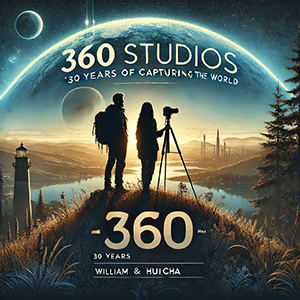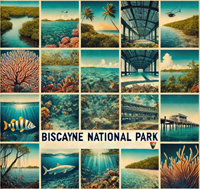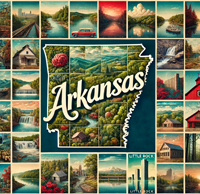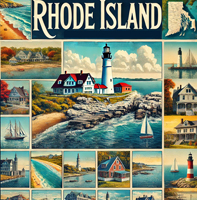

William and Hui Cha Stanek have meticulously crafted these national park guides, each showcasing the most stunning landscapes across the USA. But beyond the breathtaking scenery, these guides delve into the stories, experiences, and connections that make each park visit truly memorable.
National Parks Index | US Itineraries Index | American Roadtrips Index

Bring home a Bugville Critters book and watch as your child's love for reading and learning grows with every page. Hand-painted illustrations bring the heartwarming stories to life. Ask your librarian to add Bugville Critters to the library's digital collection today!
Discover William Stanek's Exclusive Art Collection
Explore and purchase the stunning art featured on this site. Own a piece of William Stanek's unique and captivating artwork today!
(May 18, 2025) Introducing Hawai'i Volcanoes National Park: Hawaii's Volcanic Majesty
Introduction to Hawai'i Volcanoes National Park
Hawaiʻi Volcanoes National Park is a place where the earth' s primal forces are on full display, offering a front-row seat to the ongoing creation of new land. My first visit to the park left me awestruck by the sight of Kīlauea, one of the world' s most active volcanoes, and the ever-changing landscape that surrounds it. Hiking along the crater' s edge, with steam vents releasing plumes into the air, I could feel the power and energy of the earth beneath my feet. One of the most unforgettable moments was witnessing the glow of molten lava against the night sky, a reminder of the island' s volcanic origins. Hawaiʻi Volcanoes is a place that captures the raw and dynamic beauty of our planet, offering an experience that is both humbling and exhilarating
How to Reach Hawai'i Volcanoes National Park
From the North (Hilo, HI): Travelers can take HI-11 south directly to the park. The distance is approximately 30 miles, with a travel time of around 45 minutes.
From the South (Kona, HI): Visitors from Kona can take HI-11 north to the park. This route covers about 100 miles and takes around 2.5 hours.
From the East (Hawaiian Paradise Park, HI): From Hawaiian Paradise Park, take HI-130 west to HI-11 south to the park. This journey spans approximately 40 miles and takes around 1 hour.
From the West (Waimea, HI): Travelers from Waimea can take HI-19 south to HI-11 south to the park. This route covers approximately 80 miles and takes around 2 hours.
Exploring Hawai'i Volcanoes: Must-Visit Sites
- Kīlauea Visitor Center: Offers exhibits, information, and ranger-led programs about the park's volcanic activity.
- Crater Rim Drive: A scenic drive that circles the summit caldera of Kīlauea, providing access to viewpoints and hiking trails.
- Thurston Lava Tube: A walk-through lava tube formed by past volcanic eruptions.
- Chain of Craters Road: A scenic drive that descends from the summit to the coast, passing by numerous craters and lava fields.
Seasonal Variations
Hawai'i Volcanoes offers unique beauty year-round:
- Spring: Mild temperatures and blooming native plants create ideal conditions for exploration.
- Summer: Warm weather and clear skies provide excellent hiking and volcano viewing conditions.
- Fall: Cooler temperatures and fewer visitors create a peaceful environment.
- Winter: Mild temperatures and lush green landscapes offer a serene and picturesque setting, though weather can be unpredictable.
Visitor Updates for Hawai'i Volcanoes National Park
Conservation Efforts
William Stanek's photography in Hawai'i Volcanoes emphasizes the park's dynamic volcanic landscapes and the importance of preserving its unique ecosystems. His work supports efforts to protect the park from the impacts of volcanic activity, climate change, and human intrusion.
1 Day at Hawai'i Volcanoes National Park: Hawaii's Fiery Landscape
Introduction
Hawai'i Volcanoes National Park, located on the Big Island of Hawaii, is known for its active volcanoes, lava fields, and diverse ecosystems. Here's a detailed guide to making the most of your visit, with expert tips from William and Hui Cha Stanek.
Morning: Sunrise and Volcano Exploration
5:30 AM - Sunrise at Kīlauea Overlook
- Overview: Start your day with a breathtaking sunrise at Kīlauea Overlook, offering stunning views of the Kīlauea Caldera.
- Tips from William: Arrive early to set up your tripod and capture the sunrise over the caldera. Use a wide-angle lens to encompass the entire scene.
- Insights from Hui Cha: Dress warmly and bring a thermos of hot coffee or tea. The early morning air at higher elevations can be chilly.
7:00 AM - Breakfast at Volcano House
- Overview: Head to Volcano House for a quick breakfast with stunning views of the park.
- Tips from William: Capture the morning light on the surrounding volcanic landscape and the lodge's architecture.
- Insights from Hui Cha: Enjoy a hearty breakfast to fuel your day. Grab some snacks and water for later.
Mid-Morning: Lava Tubes and Crater Hikes
8:30 AM - Thurston Lava Tube
- Overview: Explore the Thurston Lava Tube, a tunnel formed by flowing lava.
- Tips from William: Use a wide-angle lens to capture the unique interior of the lava tube. The morning light provides excellent conditions for photography.
- Insights from Hui Cha: Wear sturdy shoes and bring a flashlight. The lava tube can be damp and slippery.
10:00 AM - Kīlauea Iki Trail
- Overview: Hike the Kīlauea Iki Trail, which descends into the Kīlauea Iki Crater and offers views of hardened lava lakes and steam vents.
- Tips from William: Use a wide-angle lens to capture the expansive views of the crater and lava formations. The mid-morning light enhances the colors and textures.
- Insights from Hui Cha: The trail is moderately strenuous, so wear sturdy hiking shoes and bring plenty of water. The views are worth the effort.
Afternoon: Scenic Drives and Coastal Exploration
12:30 PM - Picnic Lunch at Devastation Trail
- Overview: Enjoy a packed lunch at Devastation Trail, a stark landscape formed by volcanic eruptions.
- Tips from William: Capture candid moments of your picnic with the volcanic landscape backdrop.
- Insights from Hui Cha: Pack a nutritious and energizing meal. Take a moment to relax and enjoy the unique surroundings.
1:30 PM - Chain of Craters Road
- Overview: Drive along Chain of Craters Road, which descends from the summit of Kīlauea to the coast, offering views of lava flows and craters.
- Tips from William: Use a polarizing filter to reduce glare and enhance the colors of the volcanic landscape. Stop frequently to capture the stunning vistas.
- Insights from Hui Cha: Take your time and enjoy the drive. The road can be narrow and winding, so drive carefully.
3:00 PM - Pu u Loa Petroglyphs
- Overview: Hike to the Pu u Loa Petroglyphs, an area with ancient Hawaiian rock carvings.
- Tips from William: Use a telephoto lens to capture the details of the petroglyphs. Late afternoon light is ideal for photography.
- Insights from Hui Cha: The trail is relatively easy, but wear comfortable shoes and bring water. The petroglyphs provide a fascinating glimpse into Hawaiian history.
Late Afternoon: Photography and Relaxation
4:30 PM - Holei Sea Arch
- Overview: Visit the Holei Sea Arch, a natural rock formation along the coast.
- Tips from William: Use a wide-angle lens to capture the dramatic sea arch and the crashing waves. Experiment with different compositions and perspectives.
- Insights from Hui Cha: This is a perfect spot to relax and take in the scenery. Bring a snack and enjoy the view.
Evening: Sunset and Dinner
6:00 PM - Sunset at Jaggar Museum Overlook
- Overview: Head to the Jaggar Museum Overlook for a stunning sunset view over the Kīlauea Caldera.
- Tips from William: Use a graduated neutral density filter to balance the exposure. Experiment with long exposures to capture the changing light.
- Insights from Hui Cha: Arrive early to find a good spot. Bring a light jacket as it can get cool after sunset.
7:30 PM - Dinner in Volcano Village
- Overview: Return to Volcano Village for a relaxing dinner at a local restaurant.
- Tips from William: Capture the evening atmosphere of the village. Try some local Hawaiian cuisine to end your day.
- Insights from Hui Cha: Reflect on the day's adventures and enjoy a hearty meal. Volcano Village offers a variety of dining options with a welcoming atmosphere.
Hawai'i Volcanoes National Park (Hawaii)
Hawai'i Volcanoes National Park, located on the Big Island of Hawaii, is known for its active volcanoes, Kīlauea and Mauna Loa, which shape the island's landscape. Covering over 330,000 acres, the park features diverse ecosystems, from lush rainforests to barren lava fields, offering unique opportunities for hiking, geology exploration, and witnessing volcanic activity.
Park History and Cultural Significance:
- Established as a national park in 1916, Hawai'i Volcanoes protects significant natural and cultural resources, including active volcanic landscapes and ancient Hawaiian sites.
- The area holds deep cultural significance for Native Hawaiians, who have lived on the islands for centuries and consider the volcanoes sacred.
Visitor Centers and Facilities:
- Kīlauea Visitor Center: Offers exhibits on the park's geology and history, a park film, maps, information, restrooms, and a gift shop.
- Jaggar Museum (Temporarily Closed): Previously provided exhibits and stunning views of the Kīlauea caldera and Halema'uma'u Crater.
- Campgrounds: The park has two campgrounds, Nāmakanipaio and Kulanaokuaiki, offering basic amenities like restrooms and picnic tables.
Best Times to Visit:
- Spring (March to May): Ideal for moderate temperatures and fewer crowds.
- Summer (June to August): Warm weather perfect for exploring the park, though it can be crowded.
- Fall (September to November): Cooler temperatures and fewer crowds make this a great time to visit.
- Winter (December to February): Offers solitude and opportunities for stargazing, but temperatures can be cool at higher elevations.
Activities and Recreation:
- Hiking: Trails range from easy walks to challenging hikes, including the Kīlauea Iki Trail, Devastation Trail, and the Crater Rim Trail.
- Volcano Viewing: Witness volcanic activity at the Halema'uma'u Crater and along the Chain of Craters Road.
- Wildlife Watching: Opportunities to see Hawaiian geese (nēnē), Hawaiian hawks ('io), and other unique species.
- Scenic Drives: The Crater Rim Drive and Chain of Craters Road offer breathtaking views of the park's landscapes and access to many trailheads and viewpoints.
- Camping: Campgrounds provide opportunities for both frontcountry and backcountry camping.
- Photography: The park's volcanic landscapes and lush forests provide endless opportunities for photography, particularly at sunrise and sunset.
Accessibility Information:
- The Kīlauea Visitor Center is wheelchair accessible.
- Accessible trails include the Sulphur Banks Trail and the paved sections of the Crater Rim Trail.
- Accessible campgrounds and restrooms are available throughout the park.
Permits and Regulations:
- Entrance Fees: Required for entry; passes can be purchased online or at park entrances.
- Camping Permits: Required for camping at designated campgrounds. Reservations are recommended during peak seasons.
- Backcountry Permits: Required for overnight stays in backcountry areas.
- Special Use Permits: Needed for activities such as weddings, commercial filming, and large group gatherings.
Nearby: Mauna Kea Observatories, Punaluʻu Black Sand Beach
-
Mauna Kea Observatories: About two hours from Hawai'i Volcanoes, Mauna Kea is home to world-class astronomical observatories and offers stunning summit views.
- Activities: Stargazing, summit tours, hiking.
- Notable Sites: Mauna Kea Summit, Visitor Information Station.
- Wildlife: Native bird species, small mammals.
-
Punaluʻu Black Sand Beach: Located about an hour from Hawai'i Volcanoes, this beach features striking black sand and opportunities to see Hawaiian green sea turtles.
- Activities: Swimming, sunbathing, wildlife viewing.
- Notable Sites: Black sand beach, sea turtle viewing areas.
- Wildlife: Hawaiian green sea turtles, various marine life.
Important Updates for Hawai'i Volcanoes National Park
Hawai'i Volcanoes National Park (Hawaii)
Local Attractions and Surrounding Areas:
Hawai'i Volcanoes National Park is located on the Big Island of Hawaii, offering a unique combination of active volcanic landscapes, lush rainforests, and diverse ecosystems. The nearby town of Volcano Village serves as the primary gateway to the park, providing a variety of amenities including accommodations, restaurants, and shops. Volcano Village is known for its charming bed-and-breakfasts and the Volcano Art Center, which showcases local art and offers workshops and cultural events.
Further afield, the city of Hilo, located about 45 minutes from the park, offers additional amenities and attractions. Hilo is home to the beautiful Liliuokalani Gardens, the Pacific Tsunami Museum, and the Imiloa Astronomy Center, which provides an immersive experience in astronomy and Hawaiian culture. Hilo's bustling farmers market is also a great place to sample local produce and crafts.
For those interested in exploring more of Hawaii's natural beauty, the Puna District offers attractions such as the Lava Tree State Monument and the geothermal warm ponds of Ahalanui Park. The scenic drive along the Chain of Craters Road within the park itself leads to dramatic coastal views and the Hōlei Sea Arch.
Nearby Attractions
Hawai'i Volcanoes National Park is surrounded by numerous attractions that enhance the visitor experience. Here are some must-see local attractions:
-
Kīlauea Visitor Center: Located near the park entrance, the visitor center offers exhibits on the park's geology, history, and ecology. It's a great starting point for visitors to get information and plan their visit.
-
Jaggar Museum and Overlook: Although currently closed due to damage from recent volcanic activity, the overlook remains a popular spot for viewing the Kīlauea Caldera and the Halema'uma'u Crater.
-
Thurston Lava Tube (Nāhuku): A walk-through lava tube surrounded by lush rainforest, offering a fascinating glimpse into the park's volcanic past.
-
Chain of Craters Road: A scenic drive that descends from the summit of Kīlauea to the coast, passing through a variety of volcanic landscapes and ending at the Hōlei Sea Arch.
-
Devastation Trail: A short, easy trail that traverses a landscape buried by the 1959 Kīlauea Iki eruption, providing insights into the park's volcanic activity.
-
Pu'u Loa Petroglyphs: An archaeological site featuring thousands of ancient Hawaiian petroglyphs, offering a glimpse into the cultural history of the area.
-
Mauna Loa Lookout: Located along the Mauna Loa Road, this viewpoint offers stunning views of the world's largest volcano and the surrounding landscape.
Nearby Towns and Cities
Visitors to Hawai'i Volcanoes National Park can find additional amenities and activities in nearby towns and cities:
-
Volcano Village: Located just outside the park, Volcano Village offers a range of accommodations, dining options, and art galleries. It's a charming base for exploring the park.
-
Hilo: Located about 30 miles northeast of the park, Hilo is the largest town on the island's east side. It offers extensive amenities, including hotels, restaurants, shops, and attractions like the Pacific Tsunami Museum and the Hilo Farmers Market.
-
Pāhoa: A small town located about 20 miles southeast of the park, Pāhoa offers accommodations, dining, and access to the Puna District's scenic spots and hot springs.
-
Kailua-Kona: Located about 100 miles west of the park, Kailua-Kona offers extensive amenities, including hotels, restaurants, shops, and attractions like the Hulihe'e Palace and the Kailua Pier.
-
Na'alehu: Located about 40 miles southwest of the park, Na'alehu is a small town offering basic amenities and access to the southernmost point of the United States, Ka Lae (South Point).
Scenic Drives
Hawai'i Volcanoes National Park boasts several scenic drives that offer unparalleled views of the park's unique landscapes. These drives are perfect for capturing the essence of the park through photography.
-
Chain of Craters Road:
- Details: This 19-mile scenic drive descends from the summit of Kīlauea to the coast, passing through a variety of volcanic landscapes, lava fields, and craters.
- Key Stops: Highlights include the Lua Manu Crater, Pauahi Crater, Mauna Ulu, the Pu'u Loa Petroglyphs, and the Hōlei Sea Arch.
- Photography Tips: William Stanek suggests stopping at various points along the road to capture the diverse volcanic landscapes. Early morning and late afternoon provide the best lighting for photography.
-
Crater Rim Drive:
- Details: This 11-mile loop road circles the summit caldera of Kīlauea, offering views of the caldera, steam vents, and the Halema'uma'u Crater.
- Key Stops: Highlights include the Kīlauea Overlook, Steam Vents, Sulphur Banks, and the Jaggar Museum Overlook.
- Photography Tips: Hui Cha Stanek recommends using a wide-angle lens to capture the expansive views along the drive. The best times for photography are during the golden hours of sunrise and sunset.
-
Mauna Loa Road:
- Details: This 17-mile road ascends the slopes of Mauna Loa, offering stunning views of the volcanic landscape and access to the Mauna Loa Lookout.
- Key Stops: Highlights include the Mauna Loa Lookout and various scenic pullouts along the road.
- Photography Tips: The Staneks suggest using a polarizing filter to enhance the colors of the landscape and the sky. Early morning and late afternoon provide the best conditions for photography.
Reservations and Timed Entry Information
Click the link to see updates. Wait up to 30 seconds for results.
Best Hikes
Hawai'i Volcanoes National Park offers a variety of hiking trails that cater to all skill levels. Each trail provides unique opportunities for exploration and photography. Here are some of the best hikes in the park:
-
Kīlauea Iki Trail:
- Details: This 4-mile round-trip trail descends from the Kīlauea Iki Overlook into the Kīlauea Iki Crater, crossing the solidified lava lake from the 1959 eruption.
- Key Viewpoints: Highlights include views from the crater rim, the crater floor, and the surrounding rainforest.
- Photography Tips: William Stanek recommends starting early in the morning to capture the best light and avoid the crowds. A wide-angle lens is ideal for capturing the expansive views.
-
Thurston Lava Tube (Nāhuku):
- Details: This short, 0.4-mile loop trail leads through a lush rainforest and into the Thurston Lava Tube, a large underground tunnel formed by flowing lava.
- Key Viewpoints: Highlights include the lush rainforest and the interior of the lava tube.
- Photography Tips: Hui Cha Stanek suggests using a tripod for long exposure shots inside the lava tube. Midday light, filtered through the canopy, provides soft, even lighting.
-
Devastation Trail:
- Details: This 1-mile round-trip trail traverses a landscape buried by the 1959 Kīlauea Iki eruption, offering insights into the park's volcanic activity.
- Key Viewpoints: Highlights include the stark landscape and views of the Pu'u Pua'i cinder cone.
- Photography Tips: The Staneks recommend using a polarizing filter to enhance the colors of the volcanic landscape. Early morning and late afternoon provide the best light for photography.
-
Pu'u Loa Petroglyphs Trail:
- Details: This 1.4-mile round-trip trail leads to the Pu'u Loa Petroglyphs, an archaeological site featuring thousands of ancient Hawaiian petroglyphs.
- Key Viewpoints: Highlights include the petroglyphs and views of the surrounding volcanic landscape.
- Photography Tips: William Stanek suggests using a macro lens to capture the details of the petroglyphs. Early morning and late afternoon provide the best light for photography.
-
Mauna Ulu Trail:
- Details: This 2.5-mile round-trip trail leads to the Mauna Ulu crater, offering views of the volcanic landscape and the lava flows from the 1969-1974 eruptions.
- Key Viewpoints: Highlights include the views from the Mauna Ulu crater and the surrounding lava fields.
- Photography Tips: Hui Cha Stanek recommends using a wide-angle lens to capture the expansive views along the trail. Early morning and late afternoon provide the best light for photography.
-
Halema'uma'u Trail:
- Details: This 2-mile round-trip trail descends from the crater rim to the floor of the Kīlauea Caldera, offering stunning views of the Halema'uma'u Crater.
- Key Viewpoints: Highlights include views from the crater rim and the caldera floor.
- Photography Tips: The Staneks suggest using a polarizing filter to enhance the colors of the landscape. Early morning and late afternoon provide the best light for photography.
-
Napau Crater Trail:
- Details: This 14-mile round-trip trail offers a challenging hike through remote volcanic terrain to the Napau Crater. The trail passes through diverse landscapes, including lava fields, rainforests, and craters.
- Key Viewpoints: Highlights include the views from the Napau Crater and the diverse landscapes along the trail.
- Photography Tips: William Stanek recommends starting early in the morning to capture the best light and avoid the afternoon heat. A wide-angle lens is ideal for capturing the expansive views.
Other Hikes:
-
Kīpukapuaulu Trail: This 1.2-mile loop is easy and takes visitors through the scenic Kīpukapuaulu, offering beautiful views of the park's lush rainforests, diverse vegetation, and unique geological features. The trail features interpretive signs that provide information about the park's ecology and history. Key points of interest along the trail include the Kīpukapuaulu Overlook and the views of the Mauna Loa. William recommends this hike for its educational value and the opportunity to see the park's unique ecosystems.
William and Hui Cha Stanek's deep connection with Hawai'i Volcanoes National Park is evident in their extensive body of work. William's technical prowess with cameras and lenses, combined with Hui Cha's artistic eye, creates a dynamic partnership that brings the park's beauty to life. They emphasize the importance of timing and light in landscape photography, often spending hours waiting for the perfect conditions to capture the essence of the park.
Their commitment to conservation is also a significant aspect of their work. Through their photography and writings, they strive to raise awareness about the importance of preserving natural landscapes like Hawai'i Volcanoes National Park. They support organizations such as the National Park Foundation and the Sierra Club, advocating for responsible tourism and environmental stewardship.
Conclusion
Hawai'i Volcanoes National Park, with its dynamic volcanic landscapes and rich cultural history, offers endless opportunities for exploration and photography. The local attractions, scenic drives, and hiking trails provide a comprehensive experience for visitors. Through the lens of William and Hui Cha Stanek, the park's beauty and significance are captured and shared, inspiring others to appreciate and protect this natural wonder. Whether you are a seasoned photographer or a casual visitor, Hawai'i Volcanoes National Park promises a memorable and enriching adventure.

Step into a world of timeless beauty with our premium, oversized hardcover book - crafted for discerning collectors and anyone who values the power of art. Perfect for your coffee table, it's more than just a book; it's a conversation starter, a window into over 30 years of William's visionary photography.
Your Support Matters
Purchasing artwork from William Stanek's collection not only brings beauty into your life but also helps us continue to share. Thank you for supporting our creative journey!

Support The Lights of Paris by Robert Stanek, William Stanek's pen name! Through vivid historical detail and deeply moving character stories, Robert takes readers on an unforgettable journey through one of history’s most transformative times.













